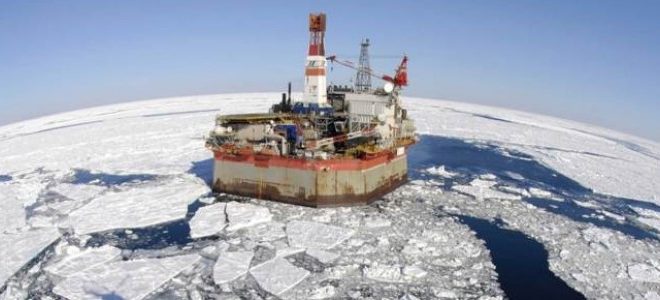When Saudi Arabia’s oil minister attended Friday’s grand opening of a giant liquefied natural gas plant in northern Siberia. he’d have known this was just part of a bigger energy story developing in Russia’s icy north. It’s not just gas that’s a big deal there. Russia’s Arctic oil flows are soaring too.
These are not the putative offshore fields that energy supremo Igor Sechin touted five years ago as Russian oil’s future. Arctic exploration has been all but halted by cheap oil and Crimea-based sanctions. But other development projects in the region have quietly gathered momentum. yielding almost 400.000 barrels a day of exports.
Russia has three oil export terminals on its Arctic coast. Shipments began from Lukoil PJSC’s 240.000 barrel a day Varandey terminal in 2008. It now handles about 150.000 daily barrels from nearby fields. Gazprom Neft’s Prirazlomnoye field produces approximately 80.000 barrels a day. with a target capacity of 130.000. The same company’s 170.000 barrel a day Arctic Gate terminal started operations this year and exports about 150.000 barrels a day from the Novoportovskoye field. Crude from all three terminals is shipped in shuttle tankers to Murmansk. from where cargoes are sent on larger vessels to Europe.
The terminals’ exports hit a new high of almost 385.000 barrels a day in November. This is up by about 100.000 barrels a day from a maintenance-related summer dip. That’s equivalent to a third of the output cut pledged by Russia in its deal with OPEC.
Russia’s adherence to that deal. just extended to the end of 2018. has been pretty good. Over the summer. it cut more than the promised 300.000 barrels a day from its October 2016 production level.
But things have started to slip. Maintenance at Prirazlomnoye and at Exxon Mobil Corp’s Sakhalin I project off the eastern coast helped lower Russian production between August and October. That’s come to an end. Now those fields are back in full production. Russia’s aggregate daily oil output has risen by about 50.000 barrels. Compliance with the OPEC deal is below where it was in May and things may get worse over winter.
As well as gas. Novatek PJSC’s new LNG project will produce about 26.000 barrels a day of condensate — a very light form of crude. That’s not a lot in the grand scheme of things. but this is just one field. As Russia’s gas industry targets deeper. liquids-rich reservoirs. its condensate output rises. Gas production in Russia is highly seasonal. so condensate output is too. Cold weather boosts demand for Russian gas from domestic and foreign consumers and the swing in gas production from summer to winter can be as much as 40 percent of the annual average.
Put simply. you should expect Russia’s condensate production to rise in coming months. Together with the recovery in Arctic oil production. this means the rest of the industry will need deeper cuts if Russia is to stay within the OPEC agreed target. That won’t be easy.
Newer fields. which produce a lot of oil and little water. are probably easiest to shut in. But they’re often among the most profitable for the companies developing them. Many get generous tax breaks. Older fields may earn less. but companies worry that declines here may never be reversed. This would make it more difficult to ramp up production when the output deal comes to an end.
Russia’s oil companies have started worrying already about an “exit strategy.“ They may want to add a seasonal surge in oil supply from gas fields to their list of anxieties.

 Iran Energy News Oil, Gas, Petrochemical and Energy Field Specialized Channel
Iran Energy News Oil, Gas, Petrochemical and Energy Field Specialized Channel



